6 The Earthly And Temporary Covenants: The Incarnation Of Christ
A Summary Of The Teaching Video
Some of the points I cover in this teaching video:
In the previous study, I began to explain my view concerning the four earthly and temporary covenants—the thread which ties them together is the promise of the coming Messiah. It was for this reason God made a covenant with men such as Noah, Abraham, Moses and David, each of whom belonged to or were connected with the Messiah’s bloodline. And, it is for this reason each of these covenants is directly linked to the Messiah’s coming into the world, whether it be that of His first or second coming.
For this study, I explain the significance of the Messiah’s bloodline. It is through this family lineage God the Father prepared a body for His Son. This union of the divine nature of the Son of God with a human nature, in the person of the Lord Jesus Christ, is called the incarnation. And this is the essence of the promise given by God in Genesis 3:15—the coming Messiah will be born of a woman. Now, the whole of our justification and redemption depends upon this great truth of Christ’s incarnation. Unless the Son of God would be given a human nature, He would not be able to redeem us from our sins, and therefore God the Father would not be able to justify us through the redemption that is in Christ Jesus. The redemptive work of Christ hinges on the incarnation of Christ, and that is the significance and the importance of the promise given by God in Genesis 3:15. The Son of God must be given a human body, and it pleased the Father to design that body through the biological lineage of a single family, beginning with Adam and Eve and culminating with the virgin Mary. The Jewish people as a race was created by God in order to prepare a body for His Son, and it is for this reason God honored the Jewish people as a race, making with them covenants, giving to them laws and bestowing upon them great earthly blessings.
Jared Smith, Muntinlupa, PH (2/12/2022)
An Outline Of The Teaching Video
The Arrangement Of The Biblical Covenants
A Summary Statement On What I Believe With Reference To The Earthly And Temporary Covenants
The Significance Of The Earthly Covenants—God The Father Would Prepare A Body For His Son Through The Bloodline Of A Single Family Lineage
The Framework Of Sovereign Grace—Putting Into Context The Incarnation Of Christ
The Electing Love Of God The Father
The Creation And Time
The Covenant Of Works
The Reprobation Of The Non-Elect
The Salvation Of The Elect
The Redeeming Grace Of God The Son
The Father Prepared A Body For His Son Through The Biological Lineage Of A Single Family Line
Without This Body, The Son Of God Would Be Unable To Accomplish His Redemptive Work
The Incarnation Of Christ Is The Union Of The Divine Nature Of The Son Of God With A Human Nature In The Person Of The Lord Jesus Christ
The Incarnation Of Christ Is The Central Promise Given By God In Genesis 3:15
The Justification And Redemption Of Sinners Is Based Upon The Incarnation Of Christ
The Promise Given By God In Genesis 3:15 Has Nothing To Do With A Conditional Covenant Of Grace Or Any Of The Earthly Covenants
The Redemptive Work Of Christ Was Symbolized By The Sacrifices And Blood Shedding Of Animals For The First 4,000 Years Of History
The Animal Sacrifices Had No Saving Virtue As They Only Pointed To The Atoning Blood Of Christ
It Is Because The Sacrifices And Blood Of Animals Cannot Atone For Sin, The Father Prepared A Body For His Son
Reflecting Upon The Precious And Most Glorious Body Of The Lord Jesus Christ
The Thread Which Ties Together The Four Earthly Covenants Is The Body Prepared By The Father For His Son
A Final Word
An Automated Transcript Of The Teaching Video
I’d like to welcome you back for another study in the Word of God. We’re going to be continuing a little series of studies on the biblical covenants, and this will be the second part, looking at the earthly and temporary covenants. But just to place you in remembrance of what we’ve been looking at in general.
The Arrangement Of The Biblical Covenants
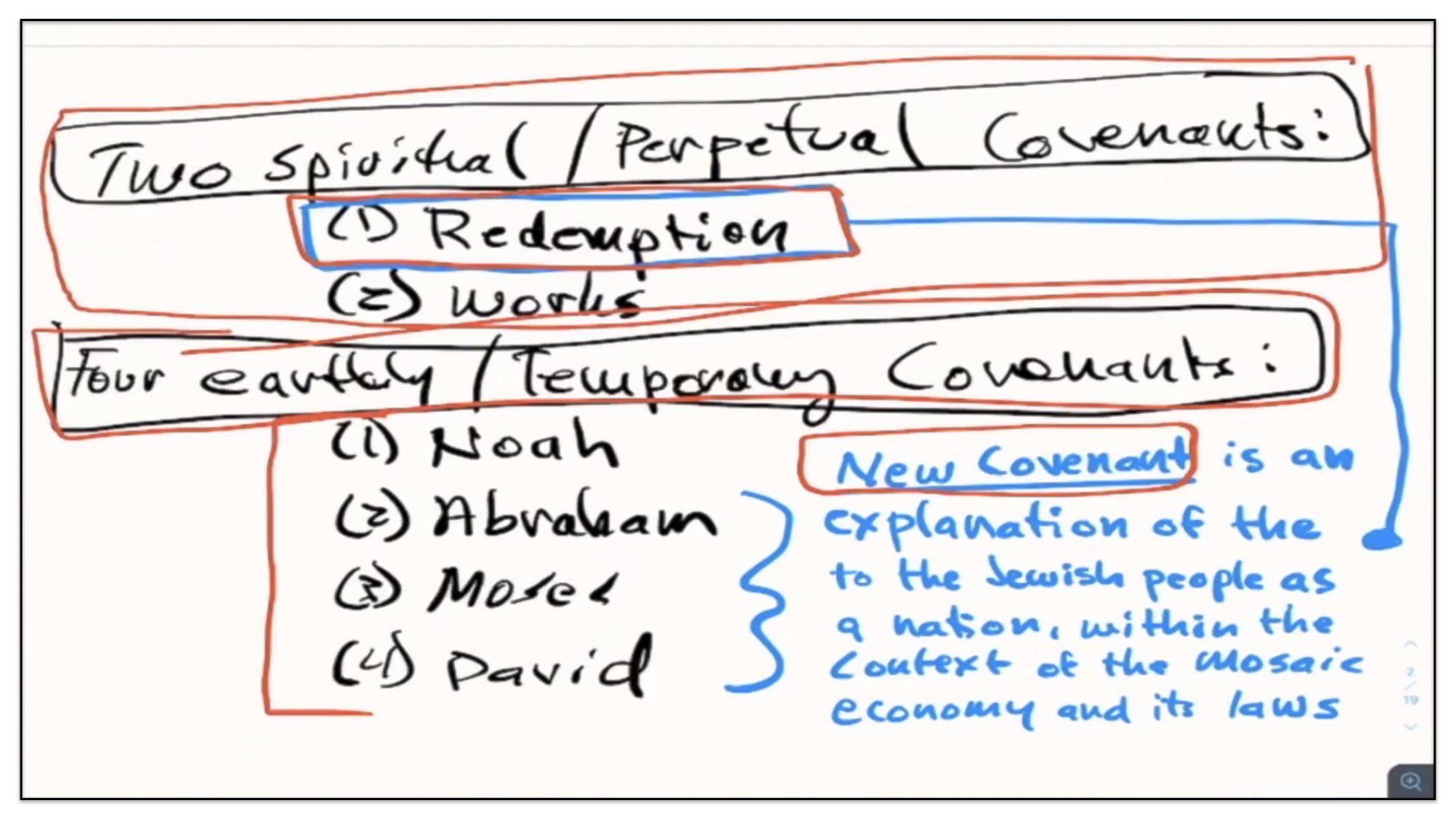
I believe the major covenants of the Bible can be placed under two categories. The first of these is what we could call the two spiritual and perpetual covenants—that would be the Covenant of Redemption and the Covenant of Works. And then the second of these would be the four earthly and temporary covenants—and that would be the Noahic Covenant, the Abrahamic Covenant, the Mosaic Covenant and the Davidic Covenant. And then of course, we have something that’s called the New Covenant, referred to by the Prophet Jeremiah, the Lord Jesus Christ and the Apostle Paul. And I believe the New Covenant is not an actual covenant, but rather, it’s an explanation of the Covenant of Redemption to the Jewish people as a nation, who were then living at the time of Christ and the apostles. And the Covenant of Redemption is explained to them within the context of the Mosaic economy and its laws. So in a nutshell, that’s my view on the major biblical covenants.
A Summary Statement On What I Believe With Reference To The Earthly And Temporary Covenants
In our previous study, we have been considering the four earthly and temporary covenants. And in an effort to try and simplify my view of these covenants, I’ve prepared a summary statement and I read the entirety of that statement last week and then began to unpack it. I’d like to read for you the statement again, and then I will pick up where I left off last week on explaining what I mean by the statement. The statement goes like this:
“I believe the thread which ties together the earthly and temporary covenants is the promise of the coming Messiah. First, each covenant was made by God with individuals or with groups belonging to the bloodline through which the Messiah would be born. Second, the purpose for each covenant is directly linked to the coming Messiah. It’s from this bloodline that God the Father would prepare a body for His Son, and is for this reason God set this bloodline apart with special honor (making with them earthly covenants, giving to them special laws and bestowing upon them earthly blessings) all of which occurred during the first 4,000 years of history leading up to the birth of the Messiah. However, with the birth of the Messiah came the end of this bloodline, resulting in the cancellation of these covenants and the termination of the special honor God placed upon the Jewish people as a race or as a nation. In no sense should these earthly covenants be identified with a conditional Covenant of Grace or to be one and the same with the Covenant of Works or the Covenant of Redemption. The earthly covenants were designed by God to establish the boundaries around which He would relate to and bestow earthly blessings upon the Jewish people as a race, all in honor of the Messianic bloodline. The spiritual covenants, on the other hand, are designed by God to establish the boundaries around which He relates to the non-elect and the elect throughout the course of history.”
Now, in our previous study, I gave a fuller explanation to the first part of the first paragraph. I’ll read it again for you—“I believe the thread which ties together the earthly covenants is the promise of the coming Messiah.” There’s two considerations on this: “First, each covenant was made by God with individuals or groups belonging to the bloodline through which the Messiah would be born; and second, the purpose for each covenant is directly linked to the of the coming Messiah.”
The Significance Of The Earthly Covenants—God The Father Would Prepare A Body For His Son Through The Bloodline Of A Single Family Lineage
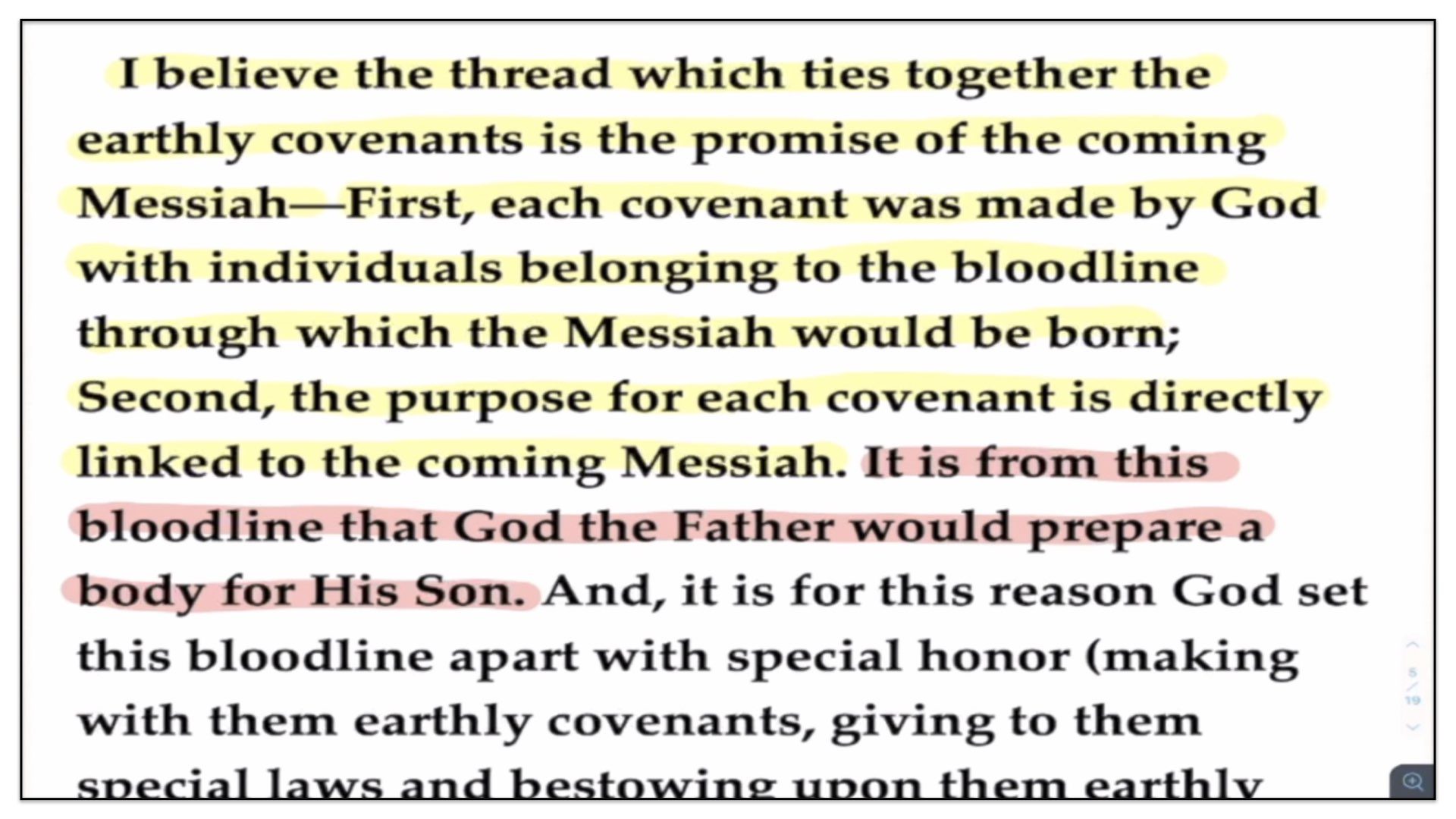
Now, for this study, I’m going to give a further explanation of the following sentence—“It’s from this bloodline that God the Father would prepare a body for His Son.” I think perhaps the most important statement I’ve made in this summary is the one I’ve just read for you. It’s from this bloodline that God the Father would prepare a body for His Son. On this concept, or idea, or truth hangs all four of these earthly and temporary covenants.
The Framework Of Sovereign Grace—Putting Into Context The Incarnation Of Christ
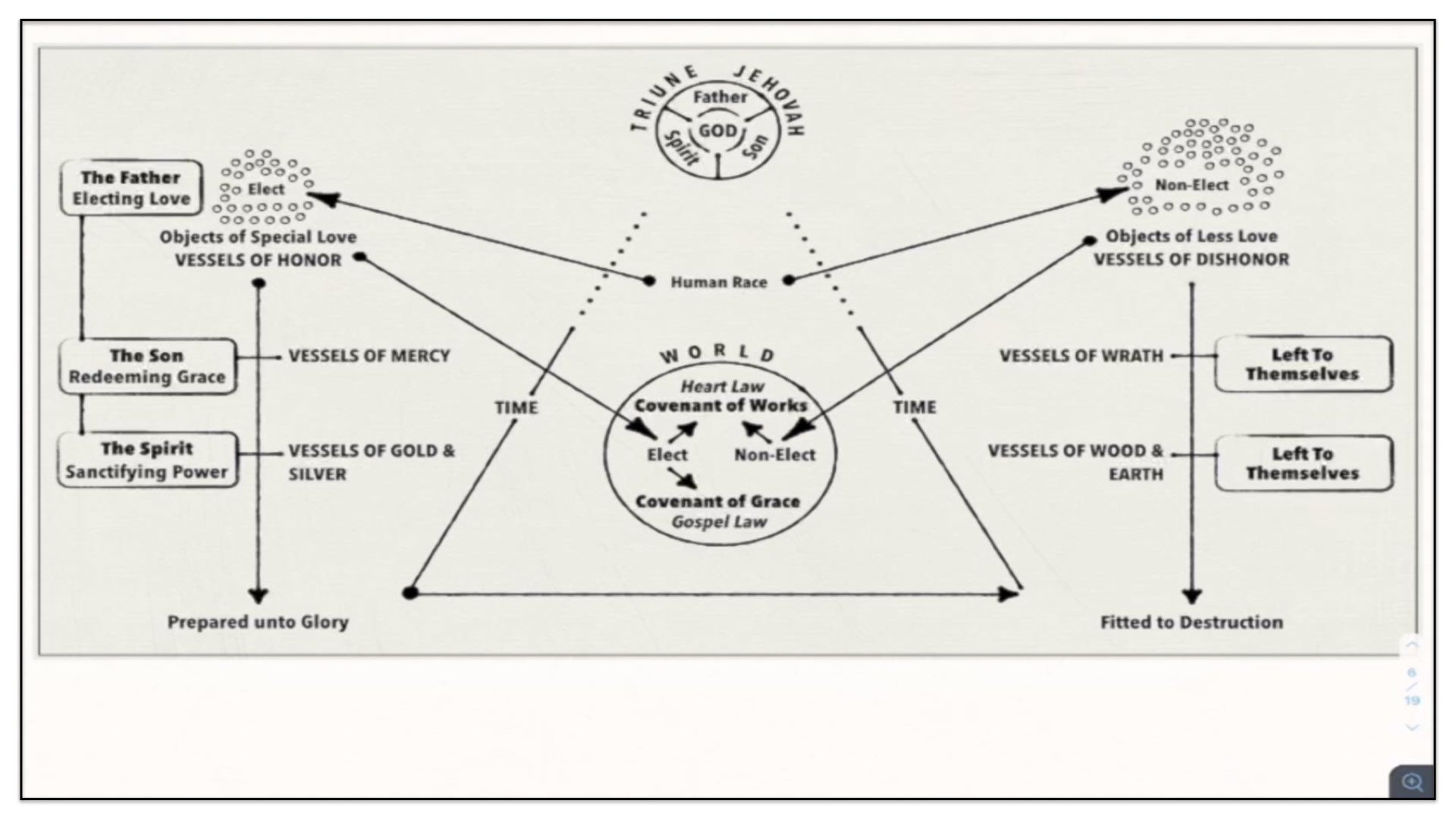
Now, in order to unpack this idea, I think it’s helpful if I were to refer you to the Framework of Sovereign Grace. Now suspecting most of you should know the explanation to this framework if you’ve been following my ministry for any length of time. There are, however, perhaps some who are joining for the first or second or third time, and therefore this will look quite odd to you, or new, if you like. So, I think it’s going to be good if I just back up and put into context and show how the pieces of this diagram fit together, which will then lead me to say something about the body God the Father prepared for His Son.
The Electing Love Of God The Father
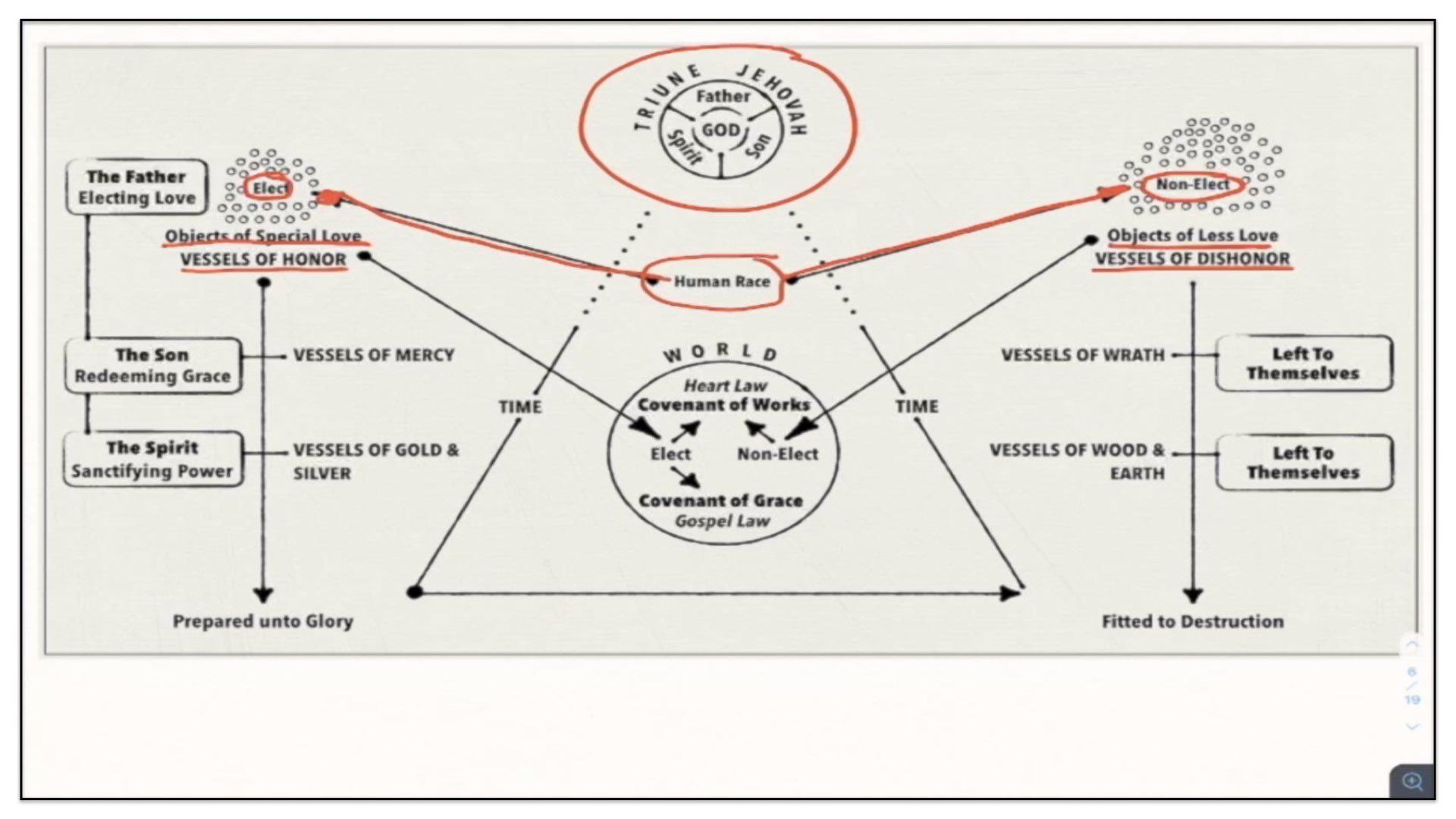
Now, looking at this framework, it all begins with the Triune Jehovah, Who from eternity drew up a blueprint for all that He would make and do in time and creation. This blueprint begins with God the Father envisioning the entire human race without viewing them in a state of sin, out from which He set some apart as special objects of His love, who are identified in the scriptures as the vessels of honor or the elect. The Father then set aside the other persons who are identified in the scriptures as vessels of dishonor, and are therefore objects of less love, and whom we may call the non-elect. Now that’s the first part of God’s blueprint.
The Creation And Time
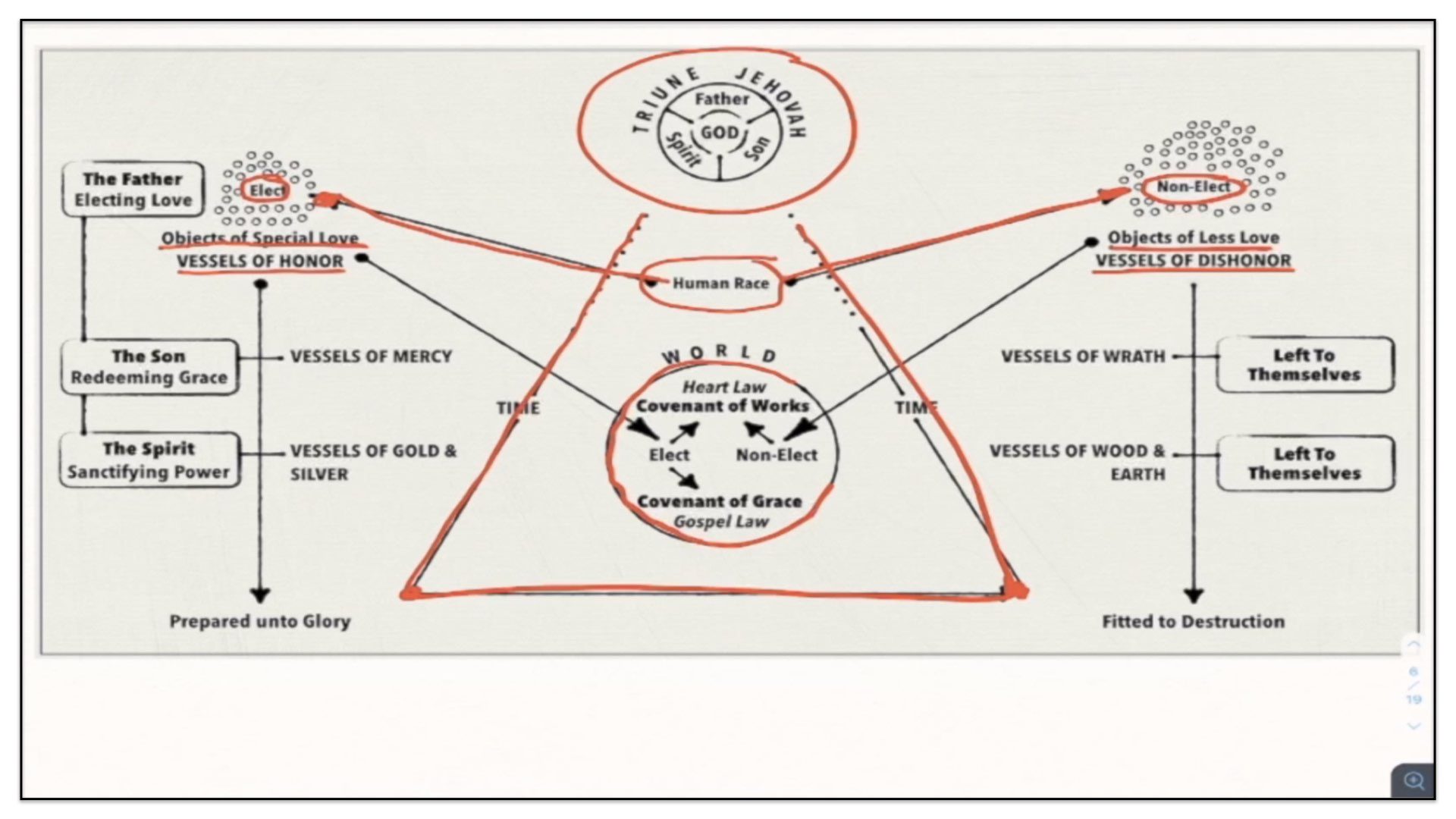
And having made this choice, it then pleased the Father to determine how He would bring the entire human race into existence. They would be made subject to a time continuum and then they would be brought into a specially made world.
The Covenant Of Works
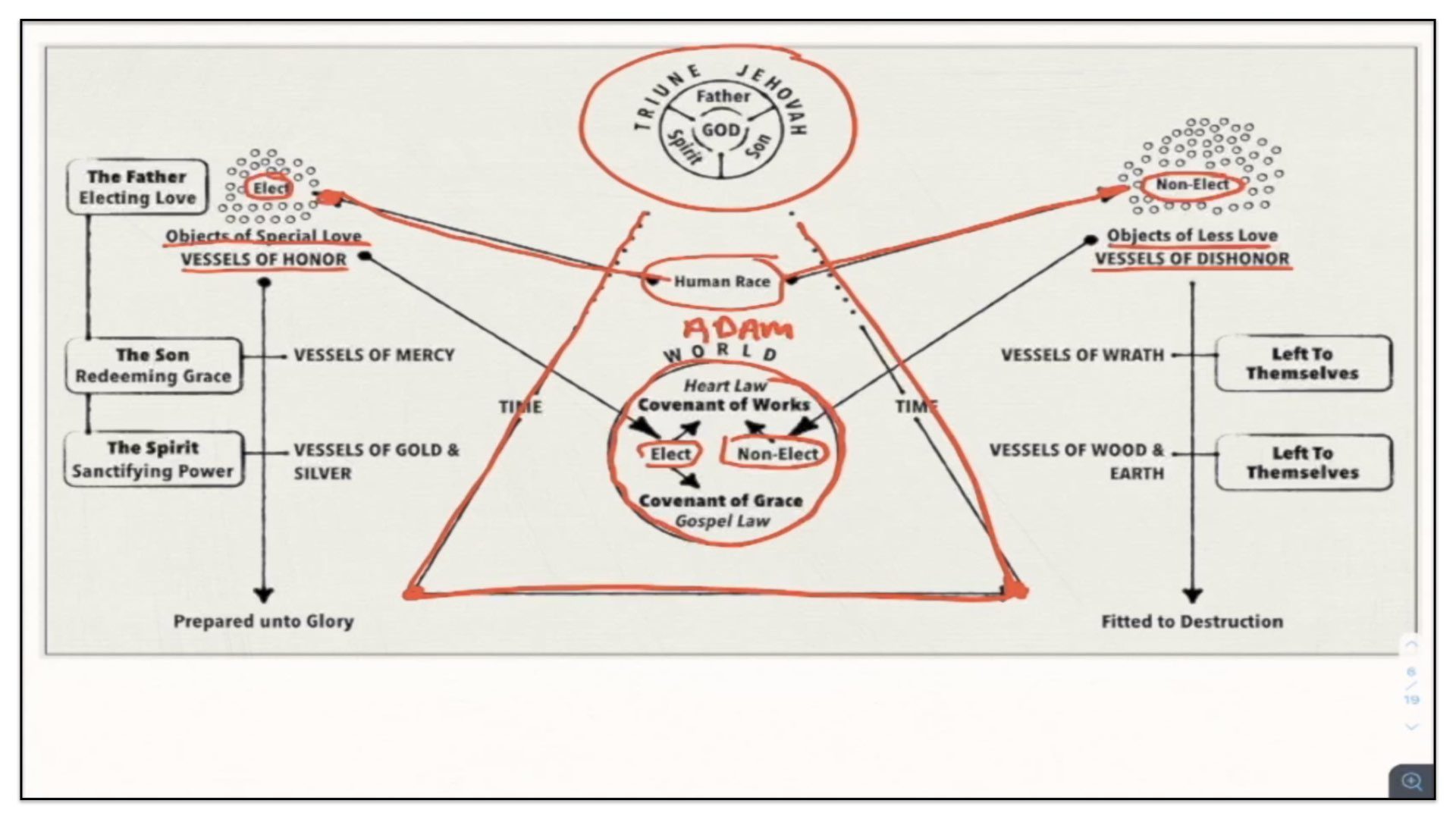
It then pleased the Father to establish the authority upon which He would relate to the human race. The first man that would be created is Adam, and it would be with Adam that God would establish a covenant—Covenant of Works—with a law inscribed upon Adam’s heart. And there are two parts to that law—the first is to love God supremely, the second is to love one’s neighbor as him or herself. And under the terms of this Covenant of Works, Adam was required to perfectly obey that law that was inscribed upon his heart. If Adam transgressed that law, it would be sin. Sin is the transgression of a law. And this would also be the violation of the Covenant of Works, in consequence of which, Adam would bring not only sin and misery upon himself, but also death. And it pleased the Father to appoint Adam to serve as the covenant head for the Covenant of Works insomuch that Adam became the representative for the entire human—for the elect and the non-elect alike. So that when Adam sinned against God, that sin has been judicially imputed and spiritually imparted to every one of us who have come through the seed of Adam. And this is what we call Original Sin—conceived in sin and shaped in iniquity. And this is what we also call the doctrine of Total Depravity.
The Reprobation Of The Non-Elect
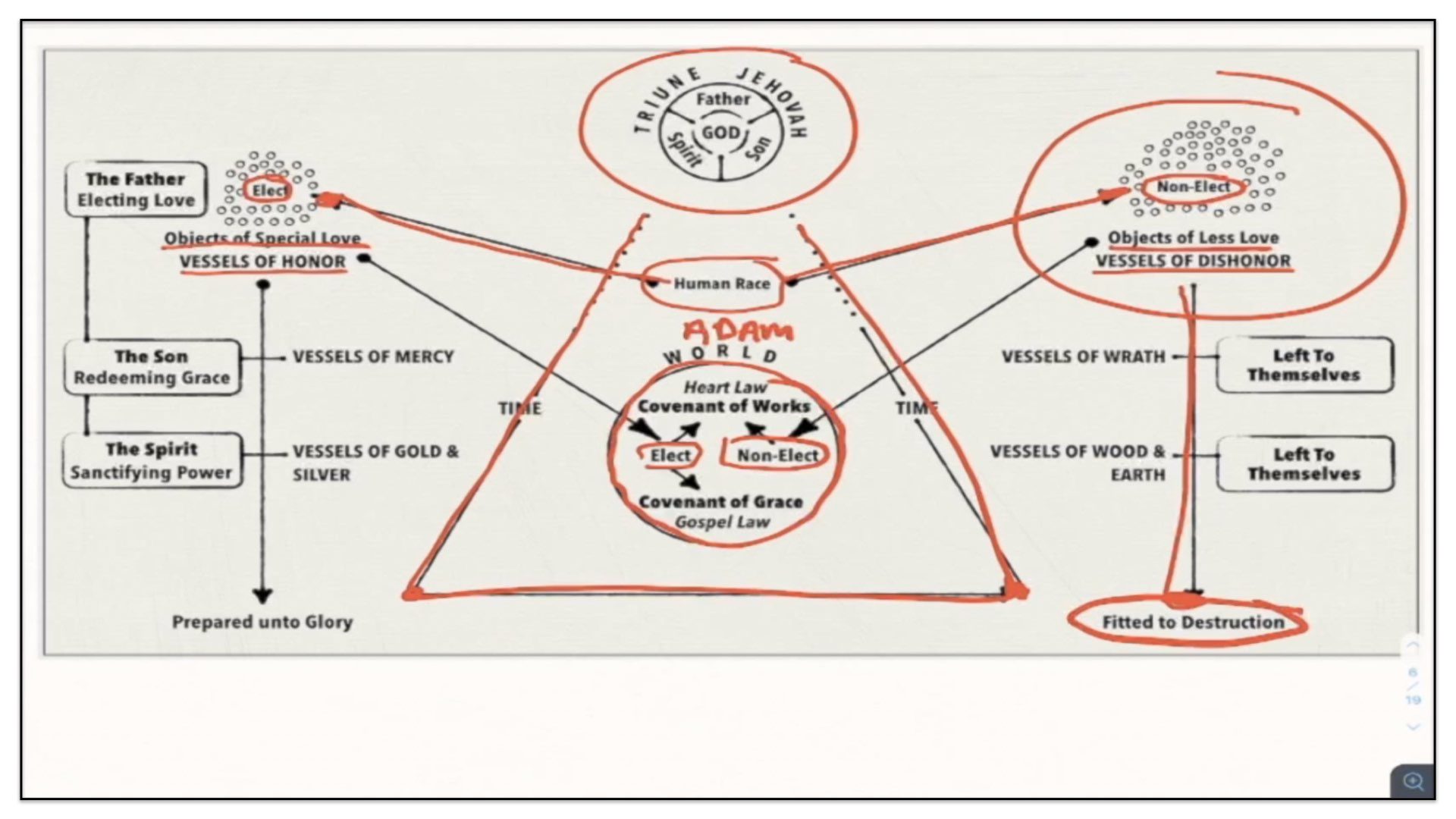
Well, having decreed that all of this should occur, it then pleased the Father to leave the non-elect in their sins and to fit them to destruction.
The Salvation Of The Elect
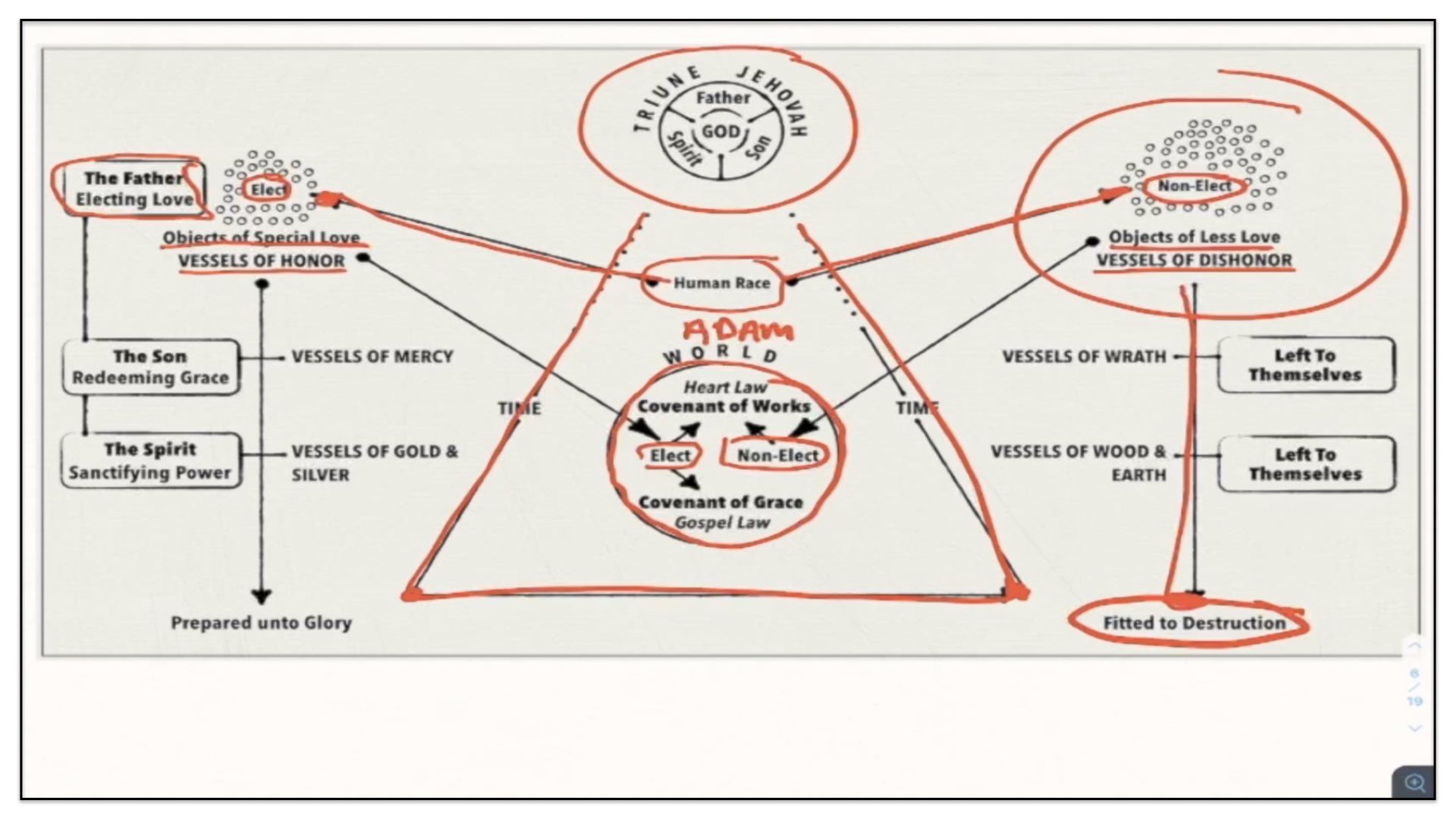
However, because the Father had already set His electing love upon the elect, the Father chose to devise a plan to save them from their sins.
The Redeeming Grace Of God The Son
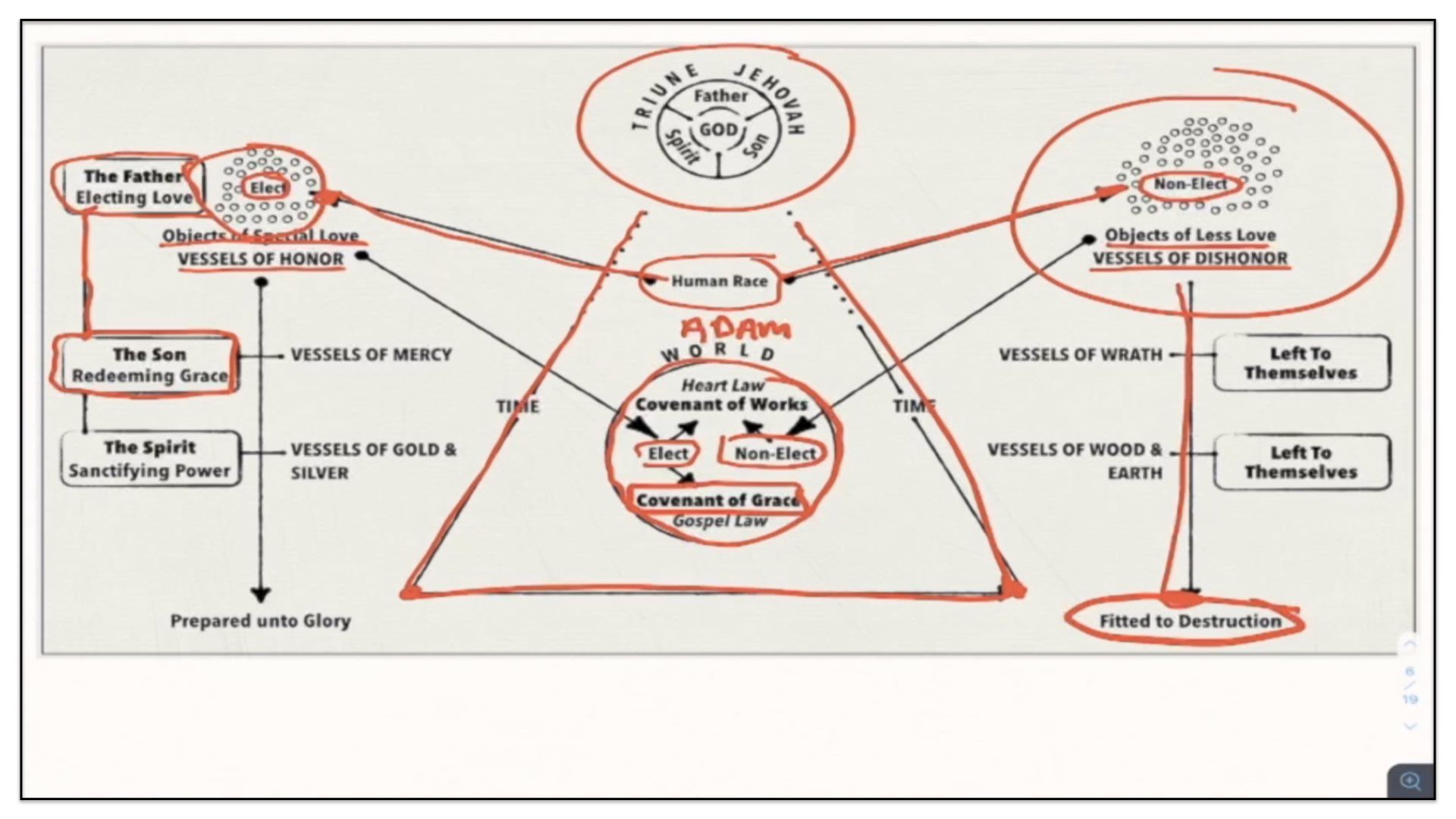
The first part of His plan was to give the elect to His Son, appointing Him to serve as their Redeemer. Now, I should point out to you that this is the beginning of that agreement of that covenant between the three Persons of the Godhead, which is called the Covenant of Grace, or the Covenant of Redemption. It’s the same covenant that can go by several different names. This is an agreement between the Father, the Son and the Holy Spirit on behalf of the elect, to save them from their sins. Now, it’s the first part of this agreement between the Father and the Son that concerns us with reference to the Father preparing a body for His Son.
Watch this. Having been appointed by the Father to serve as the Redeemer for the elect, the Son of God received them unto Himself from eternity, setting His eternal love upon them and agreeing to redeem them from their sins, as well as the curse of the Covenant of Works. Now to accomplish this redemptive plan, it was necessary for the Son of God to assume a human nature, that He might be qualified to represent the elect as their covenant head, which would be of course, under the Covenant of Grace.
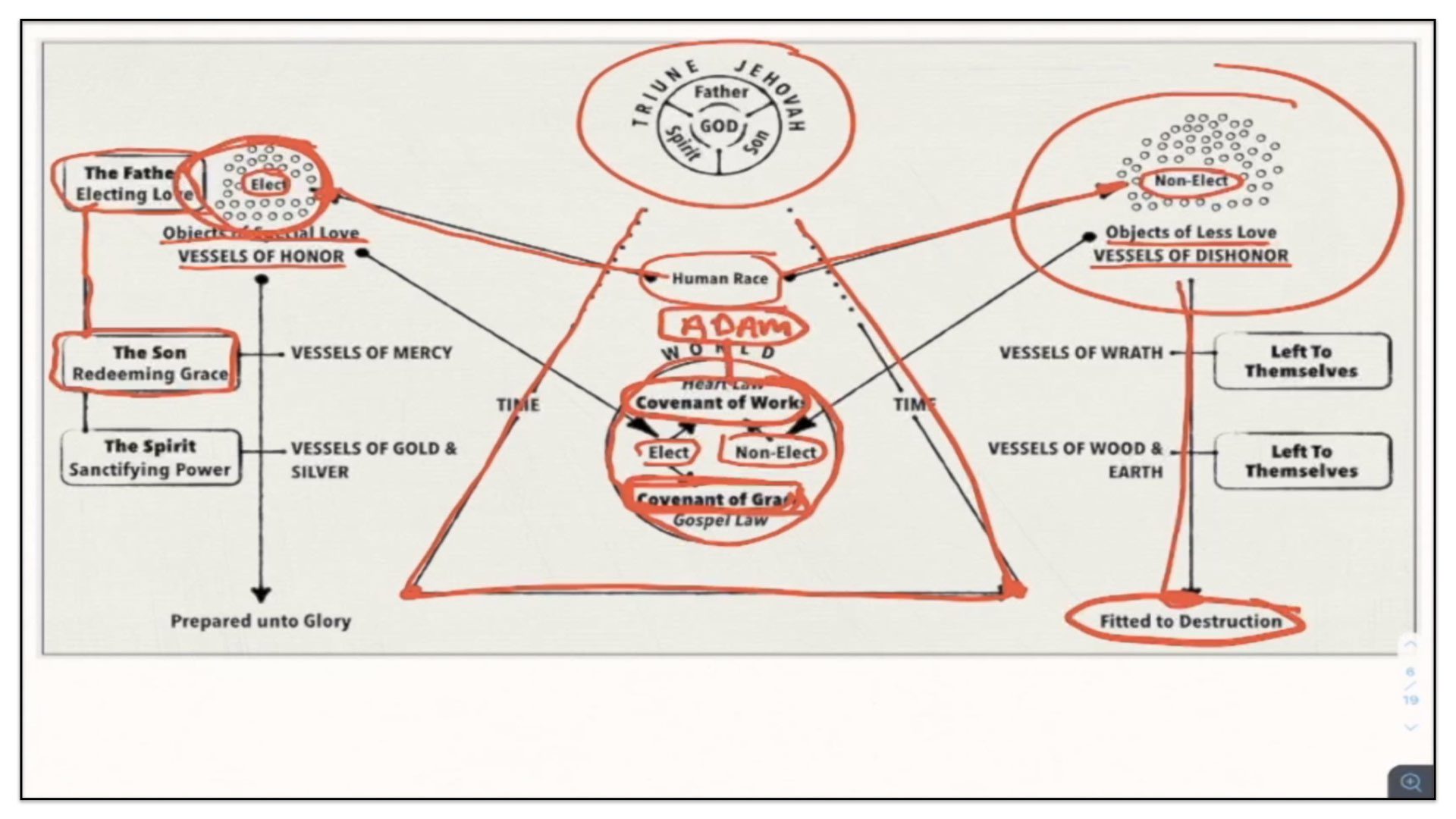
You see, Adam, the first man is the covenant head for the Covenant of Works, for the whole human race. Whereas the Messiah or Christ, The Son of God, is appointed the federal head under the Covenant of Grace, on behalf of all of the elect. And this is what I mean when I say it was necessary for the Son of God to assume a human nature, that He might be qualified and capable to serve as the substitute for His elect people whom He represents.
The Father Prepared A Body For His Son Through The Biological Lineage Of A Single Family Line
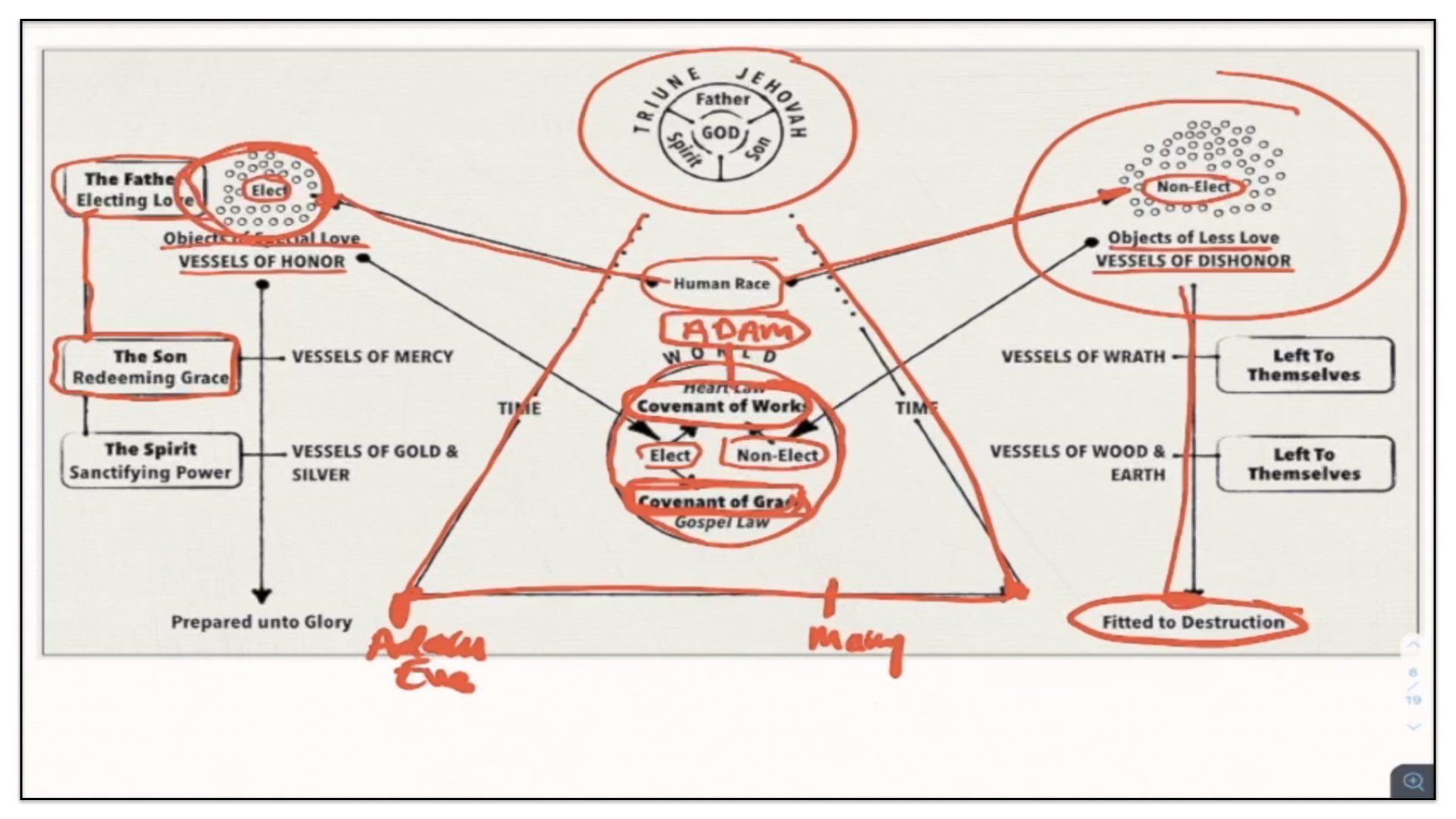
Now, to this end God the Father vowed from eternity to prepare for His Son a human body—A body which would be made from the genetic instructions, or DNA, of a single bloodline belonging to the human race. Now just think of the significance of this point, my dear friends. It’s through this bloodline, or this single family tree, that the Father would prepare a specially designed body for the Son. A specially designed body that would include all of the genetic features of that body from the color of the skin, the eyes and the hair; to the length and shape of the arms the Torso and the legs; to the peculiar features of the face, the voice and the temperament. Every detail of this body which the Son of God would assume, it was designed and prepared by God the Father according to the exact DNA code which would be brought into existence through this biological lineage, beginning of course, with Adam and Eve and culminating with the virgin Mary. So here is a biological line that extends from Adam and Eve to the virgin Mary, who then of course gave birth to the Messiah.
Without This Body, The Son Of God Would Be Unable To Accomplish His Redemptive Work
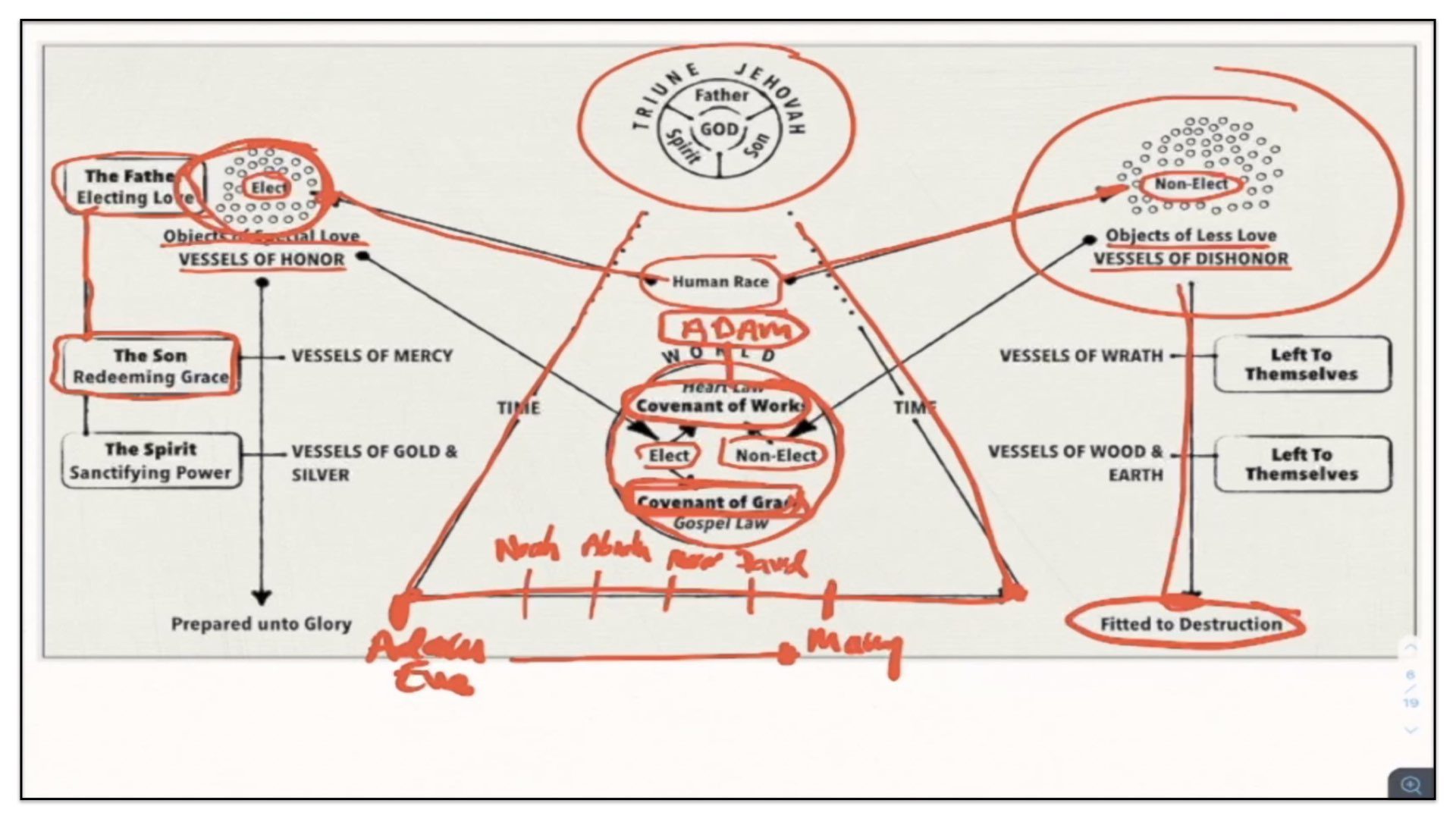
Now, please listen to me. Without this body, the Son of God would not be able to accomplish His redemptive work, and therefore great weight is laid upon this one fact. This promise given by God in Genesis chapter 3 and verse 15, that the Messiah would be born of a woman, for God told Satan that He would put enmity between him and the woman and between his seed and her seed, and it, the Messiah, will bruise his head, and he, Satan, will bruise the Messiah’s heel. Now you see, my dear friends, that is the promise of the coming Messiah—the Messiah who will be born of a woman. And this is the single promise which ties together all four of the earthly covenants, for it’s among this family bloodline that we find the covenant God made with Noah, and the covenant that God made with Abraham, and the covenant that God made with Moses (the children of Israel), and the Covenant that God made with David.
Now, I’m not certain we’ve taken sufficient time to consider the implications of the truth. I’m trying to convey to you, I mean, we become so accustomed to hearing the language, things such as the coming Messiah or the birth of Christ, that the language tends to fall on dull ears. It doesn’t strike us with much amazement or astonishment at this point. We’re so familiar with the language and the truth the language conveys, that it just becomes ho-hum or we become indifferent to the teachings. But I want to press upon you the significance of this great truth. When I talk about God the Father preparing a body for His Son, I’m referring to something called the incarnation of Christ. Now, we’re approaching quite quickly December 25th—a day we know Christ was not actually born, but a day traditionally that we tend to recognize the birth of Christ. And all of us should be therefore familiar with the language—the incarnation of Christ.
The Incarnation Of Christ Is The Union Of The Divine Nature Of The Son Of God With A Human Nature In The Person Of The Lord Jesus Christ
The Incarnation Of Christ Is The Central Promise Given By God In Genesis 3:15
The Incarnation of Christ is the union of the divine nature of the Son of God with a human nature, in the person of the Lord Jesus Christ. And you see, make no mistake about it, this is the whole point of the promise given by God in Genesis chapter 3 and verse 15. This is the promise of the coming Messiah. This coming Messiah will be born of a woman. The coming Messiah is Emmanuel, God with us. The coming Messiah will be given the name Jesus, for He shall save His people from their sins.
The Justification And Redemption Of Sinners Is Based Upon The Incarnation Of Christ
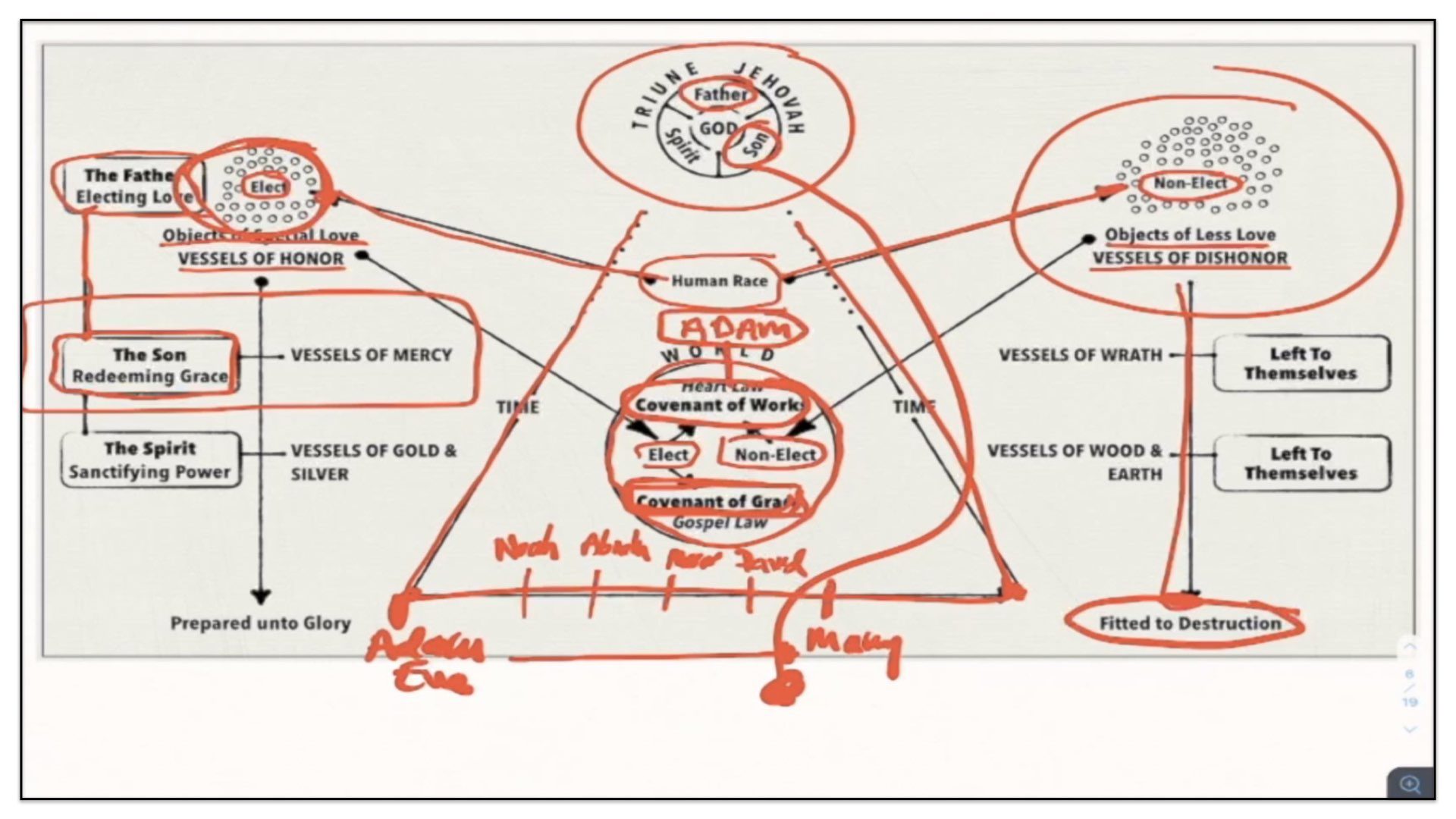
Don’t you see? The whole of our justification and redemption depends upon this great truth of the incarnation of Christ. Unless the Son of God would be given a human nature, a human body, He would not be able to redeem us from our sins. And therefore God the Father would not be able to justify us through the redemption that is in Christ Jesus. The redemptive work of Christ, this redemptive work that I pointed out to you on the diagram of Sovereign Grace, the redemptive work of Christ hinges upon the incarnation of Christ. Unless the Father sends His Son into the world, and His Son assume a human nature, particularly a body, a human body, then redemption cannot be accomplished by the Son of God.
And you see, that’s the significance, I say, of the importance of this promise given by God in Genesis 3:15, and it’s the significance which links together all four of these earthly covenants. It has to do with this central truth of the incarnation of Christ. It’s not so much focused on a covenant.
The Promise Given By God In Genesis 3:15 Has Nothing To Do With A Conditional Covenant Of Grace Or Any Of The Earthly Covenants
Now you see, that’s the mistake I think a lot of people make. They take Genesis 3:15 and they assume it’s speaking of a covenant, of an agreement, and then they interpose that idea upon the earthly covenants—the Noahic, the Abrahamic, the Mosaic and the Davidic covenants. But I say that that’s not a correct understanding of these teachings. Rather, Genesis 3:15 is all about a single promise of the incarnation of Christ. And while that is linked to the Covenant of Redemption, or the Covenant of Grace—that’s true, it’s under the Covenant of Redemption or the Covenant of Grace that the Son will be sent by the Father to assume a human nature, that’s true—yet Genesis 3:15 is not discussing, at large, the Covenant of Redemption or the Covenant of Grace. Rather, it’s specifying one part of the Covenant of Redemption, and that is the incarnation of the Messiah.
The Redemptive Work Of Christ Was Symbolized By The Sacrifices And Blood Shedding Of Animals For The First 4,000 Years Of History
Now, let me continue speaking to you for just a few more moments on the significance of the body the Father prepared for His Son. Between Adam and Eve and the finished work of Christ at Calvary, this redemptive work of Christ was symbolized by the sacrifice and blood shedding of animals. These animal sacrifices began in the garden of Eden when God shed the blood, of what we suspect to be lambs, after Adam and Eve had sinned and God clothed them with the skins of those animals. And you see, this signified as an object lesson that it’s only through the shedding of the Messiah’s precious blood that there is an atonement for sin. And by clothing Adam and Eve in those skins, it signified as an object lesson that it’s only by the judicial imputation of the righteousness of Christ that a sinner is justified by God through the redemption that is in the Messiah. But you see, the animal sacrifices only pointed to the bodily sacrifice of the Lord Jesus Christ. The animal sacrifices served as signposts to the bodily sacrifice of the Messiah. In other words, the animal sacrifices were absolutely meaningless in themselves.
The Animal Sacrifices Had No Saving Virtue As They Only Pointed To The Atoning Blood Of Christ
Now, you’ll hear some who identify as Reformed or Calvinist believers that they believed that there is a substance within the animal sacrifices themselves that had a saving virtue, because it was pointing to Christ. But I believe that that is a false notion. The animal sacrifices in and of themselves had absolutely no saving virtue in them. They were only object lessons. They were only signposts. The only virtue by which a sinner can be saved through atoning blood is in Christ Jesus Himself and the blood that He shed at Calvary. You see, the blood of the animals could not atone for the sins of God’s people. Animals are not humans. And therefore they were not accepted by the Father as a legitimate substitute for sinners.
It Is Because The Sacrifices And Blood Of Animals Cannot Atone For Sin, The Father Prepared A Body For His Son
Don’t you see, my dear friends, it’s for this reason the Father prepared a human body for His Son. And when the fullness of time had come the Father sent forth His Son into the world, uniting Him to this specially prepared body. And when the Son of God came into the world, in the Person of the Lord Jesus Christ, He said, “Lo, I come to do thy will, O God.” For remember, it was God the Father’s will that Christ should redeem His people from their sins by the offering of His body, thereby making an atonement for their sins.
Reflecting Upon The Precious And Most Glorious Body Of The Lord Jesus Christ
Yes, this is the body of Jesus Christ. A body conceived by the power of the Holy Spirit in the virgin Mary. A body conceived without sin, for having no male seed, it did not inherit judicial condemnation or spiritual corruption. The Son of God assumed a human body without original sin. And just pause here for a moment. Just picture this body in the womb of the virgin Mary. A body being formed by the power of the Holy Spirit; a body which was fearfully and wonderfully made, and in continuance was fashioned and curiously wrought, until Mary was ready to give birth. You know the scriptures speak in various places of Christ’s hands, of His feet, of His eyes, His fingers, His head, His legs, His side—all of which were the product of this bloodline through which Christ would be born. And then, when He was born, His delicate body was wrapped in swaddling clothes and then gently laid in a manger. Day by day His body grew in stature and though He was subject to the same frailties and vulnerabilities that is true of every soul, yet without sin. When He hungered, He ate; when He thirsted, He drank; when He wearied, He slept. He was in possession of all human emotions, yet without sin. When He celebrated, He rejoiced; when He grieved, He sorrowed; when He loved, He showed compassion; when He hated, He expressed anger. He also suffered many agonies and tribulations of mind and of soul and of body, especially when offering Himself a sacrifice unto God and a substitute for sinners. He became obedient unto death, even the death of the cross. He bore the sins of His people in His own body on the tree, and therefore my dear friends, we who were at one time alienated and enemies of God by wicked works yet now has He reconciled in the body of His Son through death, to present us holy and unblamable and unreprovable in His sight. Surely the Lord Jesus Christ has borne our grieves and carried our sorrows. He was wounded for our transgressions. He was bruised for our iniquities. The chastisement of our peace was upon Him. And with His stripes we are healed. Listen, so precious is the body of the Lord Jesus Christ that prior to His crucifixion, you’ll remember, while Jesus was in Bethany, there came to Him a woman having an alabaster box of ointment and spikenard. It was very precious. She break open the box and poured that ointment on His head. Now, when some of the Lord’s disciples witnessed what this woman had done they rebuked her. They felt that she could have sold that ointment and with the money fed the poor. But the Lord Jesus turned upon them and He rebuked them saying, “This woman has wrought on Me a good work. For she knowing that I must soon die has anointed My body in preparation for the burial. Truly I say unto you, wheresoever this gospel shall be preached throughout the whole world, this also that she has done shall be spoken of for a memorial of her.” Don’t you see how the Lord Jesus Himself is highlighting the beauty and the preciousness of His own body that was anointed by one prior to His death? The body of the Lord Jesus Christ is truly precious. For you remember, so precious is His body that after His death on the cross, Joseph begged Pilate to receive permission to remove that body from the tree. And then with the help of Nicodemus, the two men prepared a mixture of myrrh and alloys, it was about a hundred pound in weight, and then they wound the body of Jesus in fine linen clothes, intermixed with those spices, and they carefully laid His body in a new sepulcher wherein never was man laid before. My dear friends, you can’t convince me the body that was prepared by God the Father for His Son isn’t precious. It’s very precious. And so precious is the body of the Lord Jesus Christ that when the grave could no longer hold Him, God the Father raised the body from the dead, setting Him, the Lord Jesus Christ, at His own right hand in the heavenly places, far above all principality and power and might and dominion. Yes, even above every name that is named, not only in this world, but in the world that is to come. And you know, the Father has put all things under His feet. This is the body of the Lord Jesus Christ, the body prepared for Him by the Father.
The Thread Which Ties Together The Four Earthly Covenants Is The Body Prepared By The Father For His Son
This is, as I’ve said, the body prepared for His Son by the Father. Formed from the DNA of that bloodline from which Adam and Eve to the virgin Mary would come. Conceived by the power of the Holy Spirit, made of a woman, curiously wrought in her womb, then wrapped in swaddling clothes and laid in a manger, anointed with precious oil before his death, embalmed with precious spices after his death, wrapped in fine linen, clothing, and laid in a new sepulcher. Made under the authority of the Covenant of Works, made subject to the heart law, offering His body a sacrifice to God and a substitute for His people. Raised to life and seated at the right hand of the Father. And as the Angels told the eleven disciples, with the same glory that the Lord Jesus ascended into heaven, shall we see Him return to this earth. This my dear friends, this is the body, the precious body, the glorious body, prepared by God the Father for His Son. This is the body promised by God in Genesis 3:15. And I say, this is the thread which ties together these four earthly covenants.
A Final Word
Look with me once again at the statement—“I believe the thread which ties together the earthly covenants is the promise of the coming Messiah. Each Covenant was made by God with individuals or groups belonging to the bloodline through which He would be born. The purpose for each covenant is directly linked to the coming of the Messiah. And it’s from this bloodline that God the Father would prepare a body for His Son.” And now look at the closing words of this paragraph—“It is for this reason God set this blood line apart with special honor (making with them earthly covenants, giving to them special laws and bestowing upon them earthly blessings) during the first 4,000 years of history,” until the birth of the Lord Jesus Christ. It’s going to be my joy in our next study to explain to you what I mean by the closing part of this paragraph. It will be then that I hope to show you why the scriptures often refer to the Jewish people as a race to be God’s elect people. What exactly does that designation mean? And I hope also that I’ll be able to read for you in the context when God established each of these four earthly and temporary covenants.
Listen, we’re making our way gradually along this path of explanation and what these earthly covenants are and I do appreciate your patience as we take this slow and step by step. I do hope that if you are in a place of examining covenant theology and the different views that are available out there in the world, that you will at least give me a fair hearing on these matters. Consider what it is I say on these points, if they are aligned with scripture or not. And I do hope that if you find as I have found these points to be in accordance with scripture, that you will be built up in your most holy faith and you’ll find that sure anchor that your soul needs, as you not only navigate through the Word of God to understand the teachings of the Bible, but as you navigate through this world as a stranger and pilgrim. For ultimately, that’s why we study the scriptures. We study the scriptures that we might know Him, the only true God and Jesus Christ whom He has sent, and that we might be able to walk with Him through this world. And to that end I pray that God will grant us that blessing. Till next week, God bless you.
Jared Smith served twenty years as pastor of a Strict and Particular Baptist church in Kensington (London, England). He now serves as an Evangelist in the Philippines, preaching the gospel, organizing churches and training gospel preachers.
Jared Smith's Online Worship Services
Jared Smith's Sermons
Jared Smith on the Gospel Message
Jared Smith on the Biblical Covenants
Jared Smith on the Gospel Law
Jared Smith on Bible Doctrine
Jared Smith on Bible Reading
Jared Smith's Hymn Studies
Jared Smith on Eldership
Jared Smith's Studies In Genesis
Jared Smith's Studies in Romans
Jared Smith on Various Issues
Jared Smith, Covenant Baptist Church, Philippines
Jared Smith's Maternal Ancestry (Complete)




